For a small-sized state like Indiana, having a huge variety of wild bird species is pretty impressive! In fact, according to the Indiana Bird Records Committee (IBRC) of the Indiana Audubon Society, there are 422 recorded species of birds around the Hoosier State.
This makes it an ideal stop for an avid birder to seek out a wide range of birds without having to translocate! If you want to find out more about Indiana’s most popular and unique birds, this article will have you covered!
Today, we’ll walk you through a brief guide with quick overviews of some of the most impressive types of birds in the state. The list is also assorted by color to help you pick your favorites. Let’s hop in!
Red Birds in Indiana
Northern Cardinal
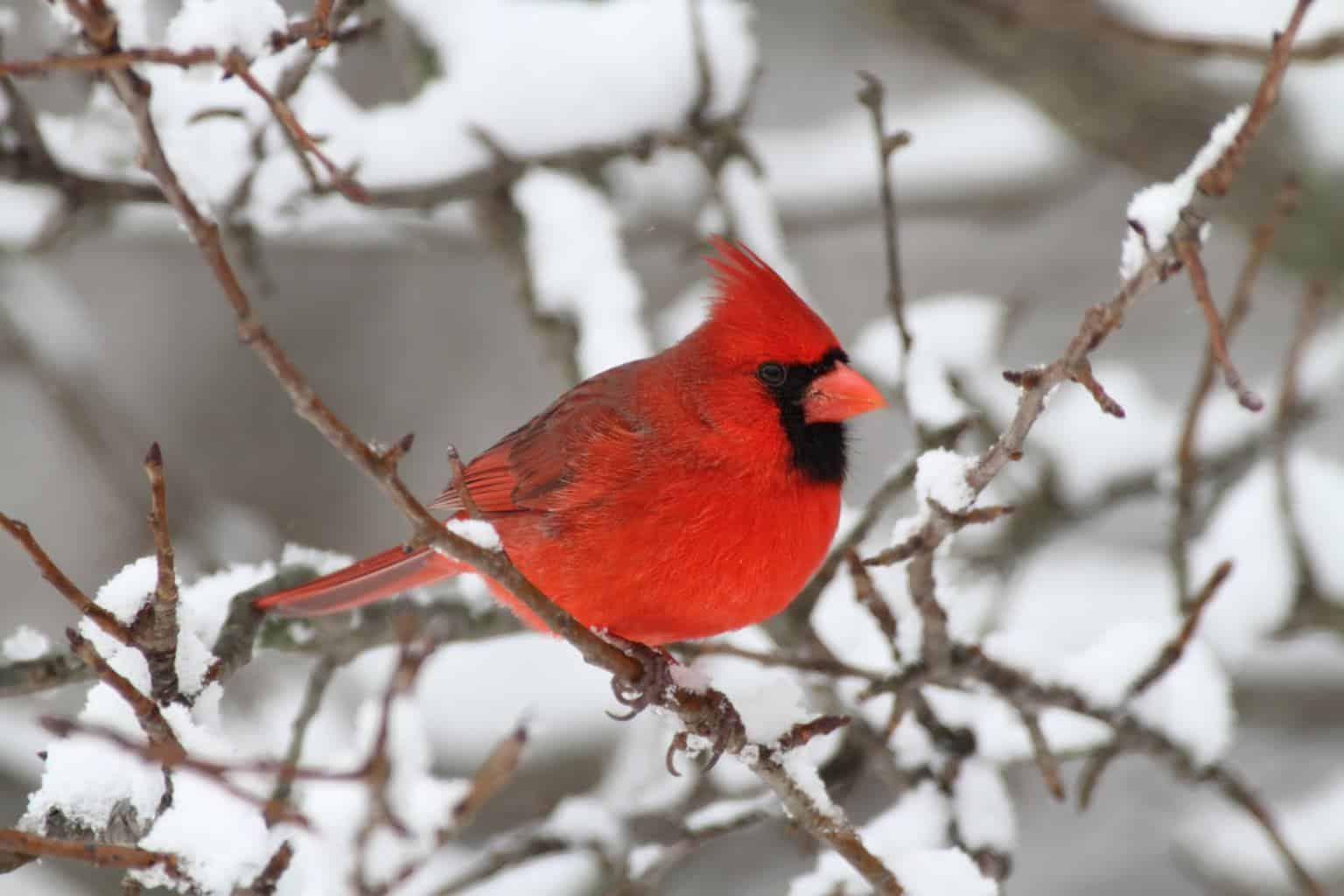
- Scientific Name: Cardinalis cardinalis
- Length: 8.3 to 9.1 In
- Weight: 1.5 to 1.7 oz
- Wingspan: 8.9 to 12.2 In
Kicking off the list with one of the most impressive and common birds you can find lurking around your bird feeder in Indiana. The male Northern Cardinals are popular for their remarkably vibrant red color and the red crests above their heads.
On the other hand, females are pale brown birds with duller colors and an orange tinge, but you can find some touches of red on their wings, crest, and tail.
Northern Cardinals have a characteristic large bill that makes them great at cracking seeds. You can also find them in open wooded areas and woodland edges in Indiana’s city parks any time of the year.
You can also attract them to your feeder using safflower seeds.
Red-Winged Blackbird
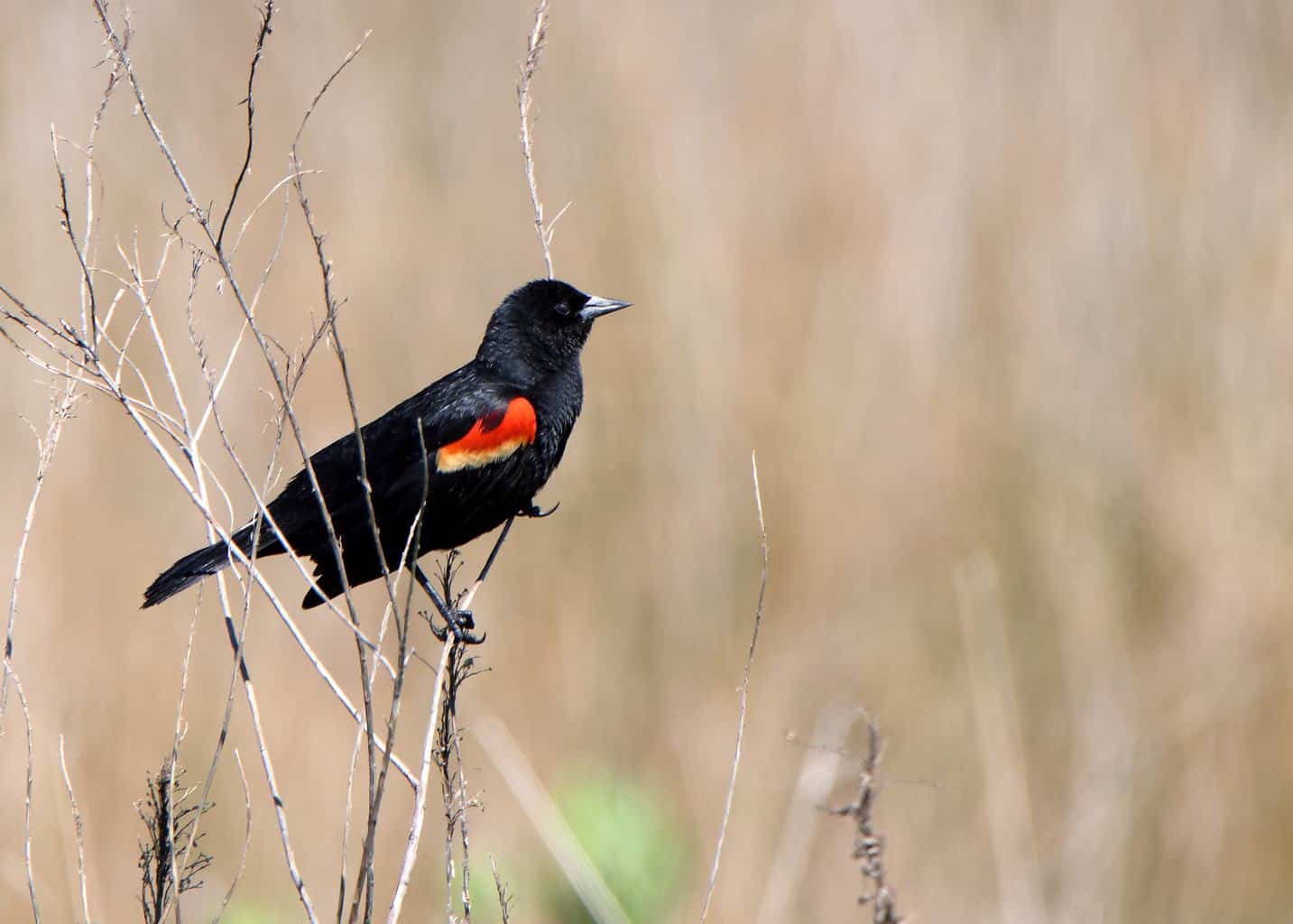
- Scientific name: Agelaius phoeniceus
- Length: 6.7 to 9.1 in
- Weight: 1.1 to 2.7 oz
- Wingspan: 12.2 to 15.8 in
As the name suggests, members of the blackbird species are mostly known for rocking an entirely black-feather coat with a whiting sheen. However, the most impressive aspect of the Red-winged Blackbird is the incorporation of colorful feathers.
Males have the standard look of a blackbird with exceptional bright yellow and red patches on their black wings. Females have a mostly dark brown color with very heavy streaking all over their bodies.
They’re among the most common blackbirds in Indiana, and it’s pretty easy to spot them, even for a beginner bird watcher. The best spot to find them during breeding season is usually near bodies of water, such as lakes, streams, marshes, and wetlands.
House Finch
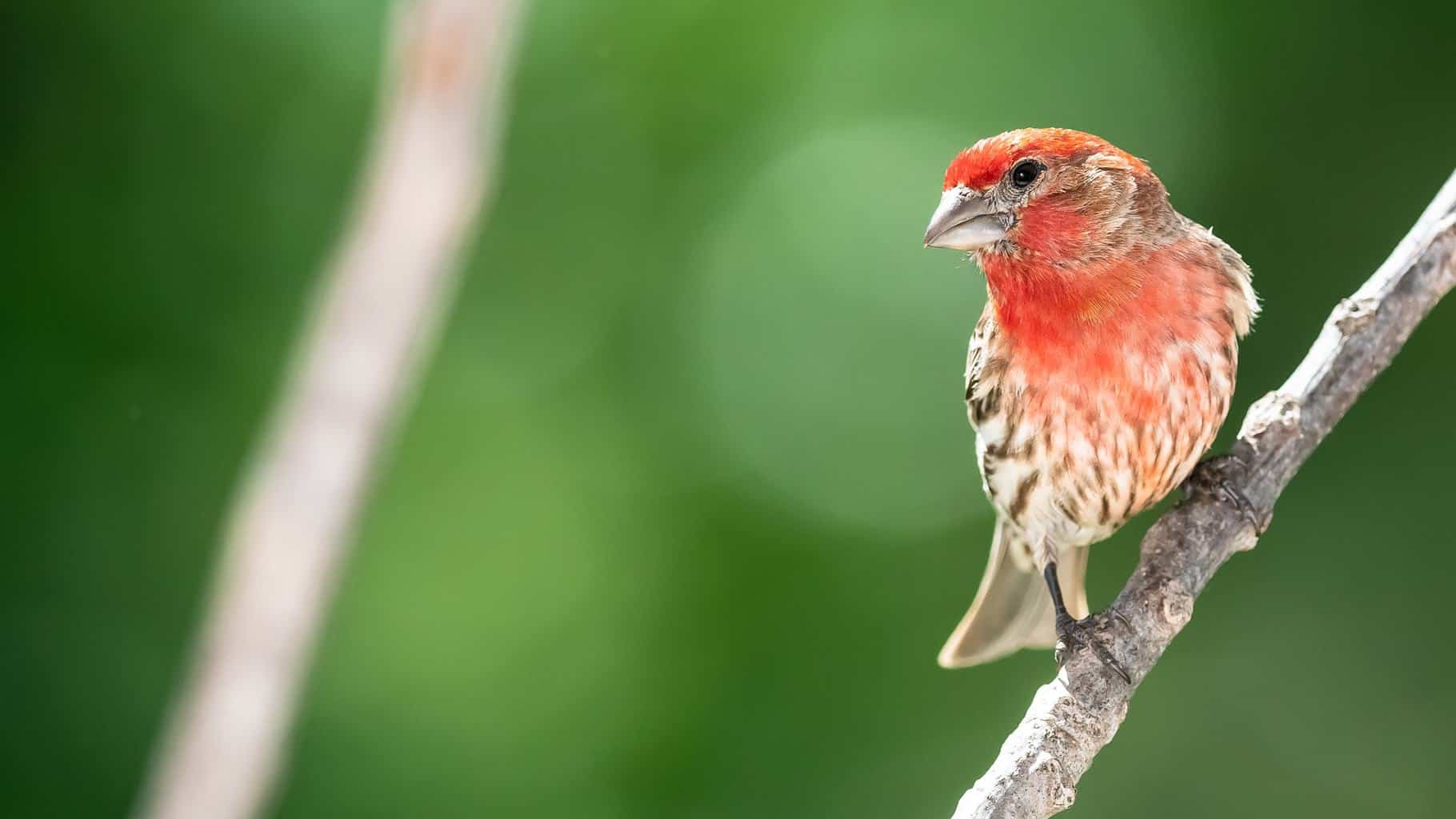
- Scientific Name: Haemorhous mexicanus
- Length: 4.9 to 6.1 in
- Weight: 0.6 to 0.9 oz
- Wingspan: 8.1 to 10.5 in
Although House Finches are pretty common all over North America and the state of Indiana, they’re still a mesmerizing bird to watch, even for veteran birders! This is because those lovely finches are very easy to find and even easier to identify. As the name suggests, these common backyard birds will drop by your bird feeder looking for a quick meal of seeds.
You’ll easily differentiate them from common wrens due to their unique plumage of rose and reddish-pink covering their breasts and faces. The degree of color saturation of the bird will vary according to their diet. Like most other birds, these colors are exclusive for males, where females are less vibrant with a brownish-gray color.
Red-Bellied Woodpecker
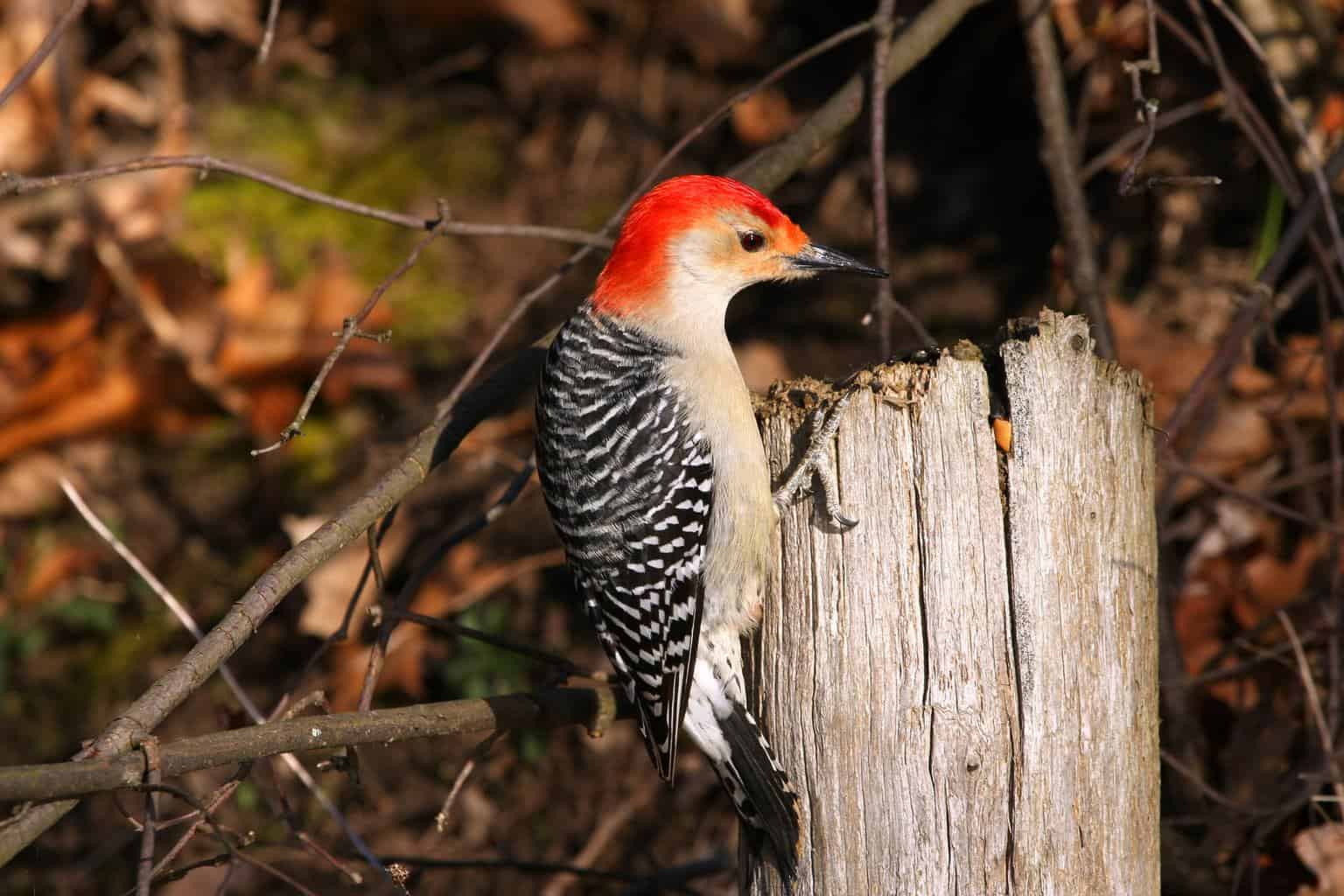
- Scientific Name: Melanerpes carolinus
- Length: 9.2 to 10.3 In
- Weight: 2.2 to 3.2 oz
- Wingspan: 15.7 to 17.8 In
The Red-bellied Woodpecker is an easy to identify woodpecker because of its uniquely barred back and the very obvious red patch on its head, whether male or female. You can tell the male and female apart because the male has black flight feathers and the female slightly brown feathers on her wings.
Ensure that you don’t confuse the woodpecker’s name with its description because they only have a slight tint of red shade on their bellies that won’t stand out when you first see them. But, you’ll hear them before you see them because they’re always banging away on tree trunks looking for food.
It’s accustomed to urban life and will occasionally land around bird feeders where it feeds on insects. However, they can also feed on small fish in ponds.
Pileated Woodpecker
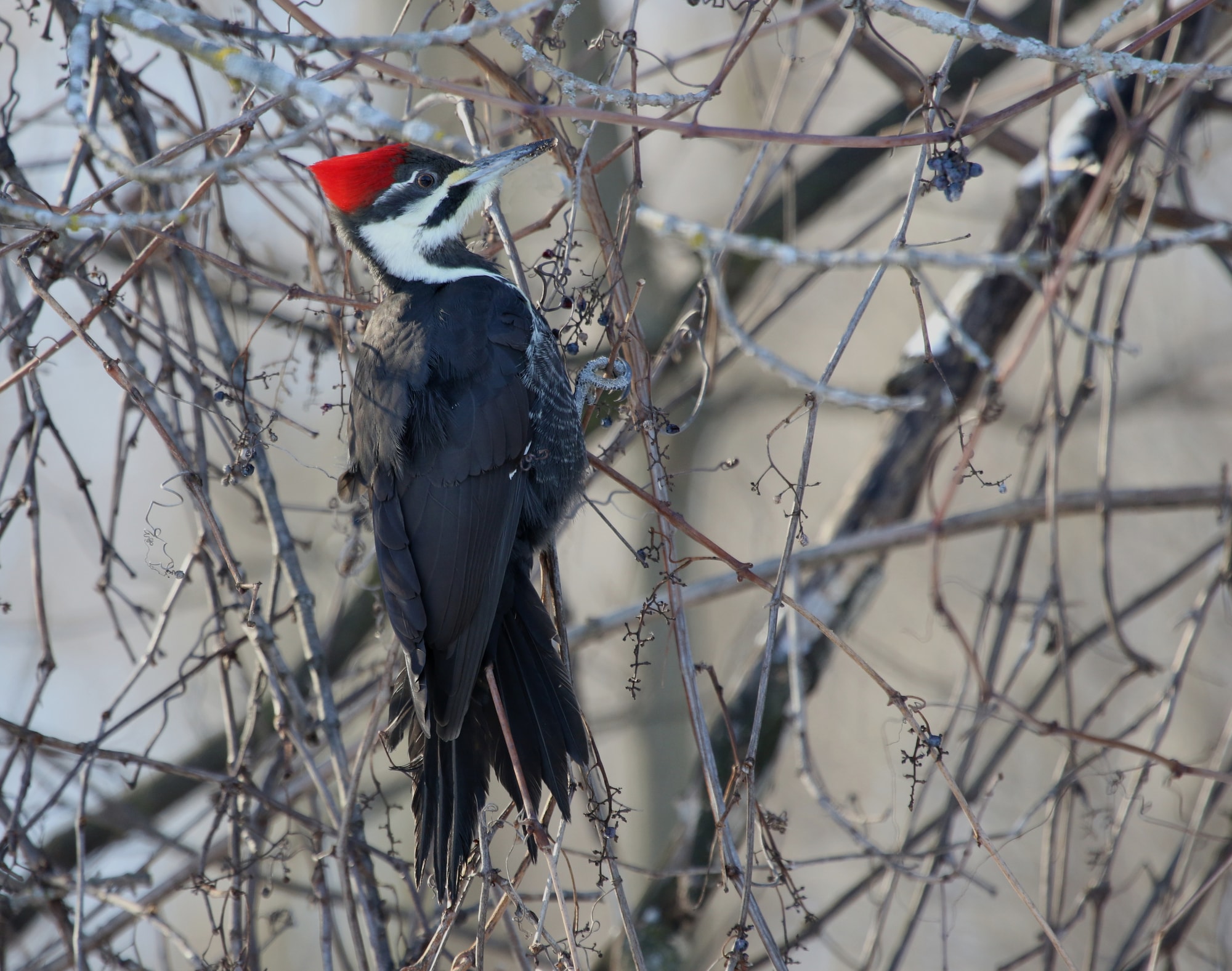
- Scientific Name: Dryocopus pileatus
- Length: 16 to 19 In
- Weight: 8.8 to 14.1 oz
- Wingspan: 26 to 30 In
The Pileated Woodpecker is another common woodpecker in the state, despite not being the most common one. These birds are the main inspiration behind Woody the Woodpecker, so you can expect them to have that red cap on their head. They are mostly black with white stripes on their face.
Pileated Woodpeckers shouldn’t be confused with the Red-headed Woodpecker, which is smaller and has its entire head covered in red feathers.
Red-Tailed Hawk
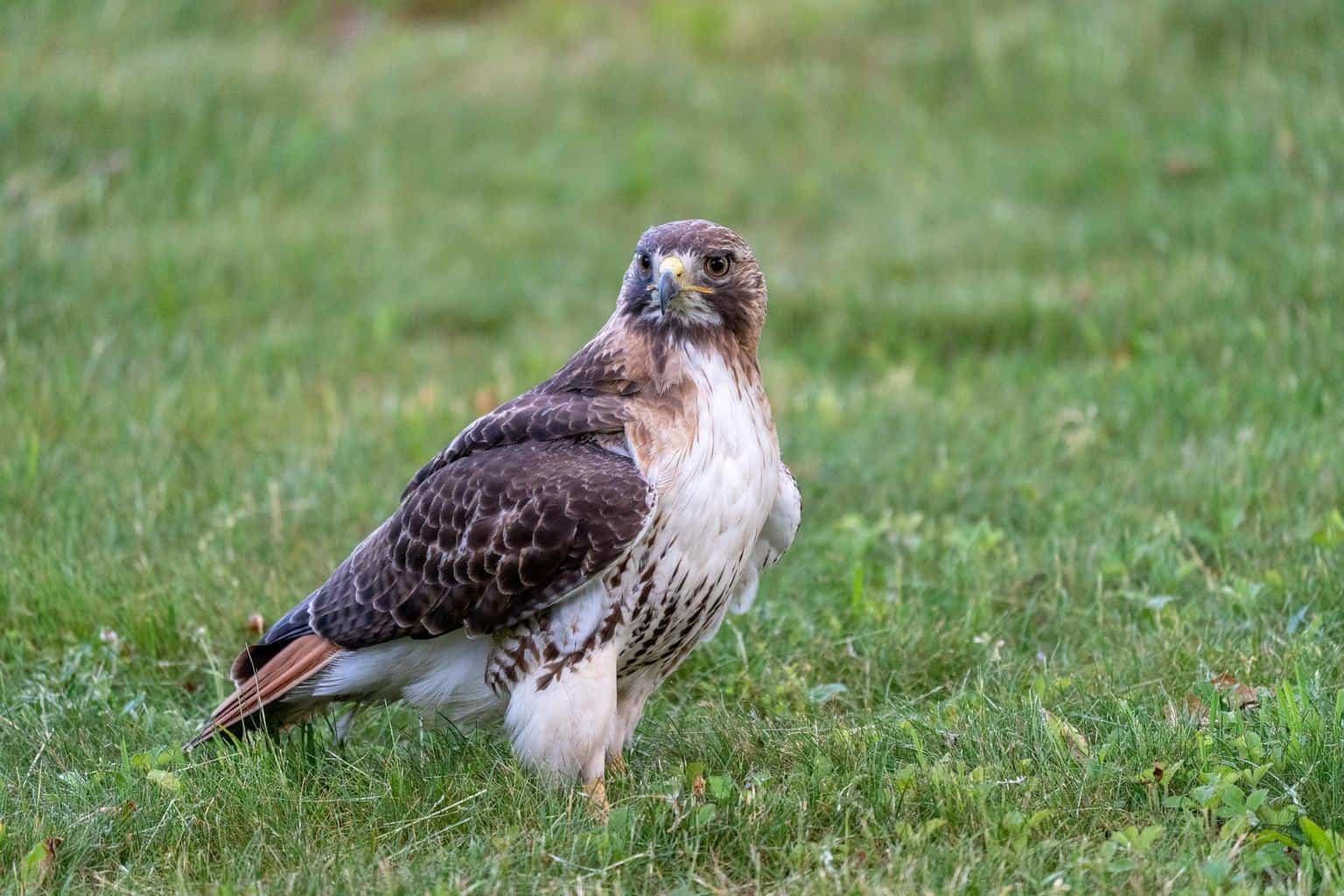
- Scientific Name: Buteo jamaicensis
- Length: 17.7 to 22.1 inches
- Weight: 24.3 to 45.9 ounces
- Wingspan: 44.9 to 52.4 inches
The Red-tailed Hawk isn’t only the most common hawk in the state of Indiana, but they’re also one of the most graceful and intimidating birds of prey around.
They mainly feed on mice, squirrels, frogs, and small snakes, so they have a huge impact on the balance of the ecosystem in the region.
Blue Birds in Indiana
Eastern Bluebird
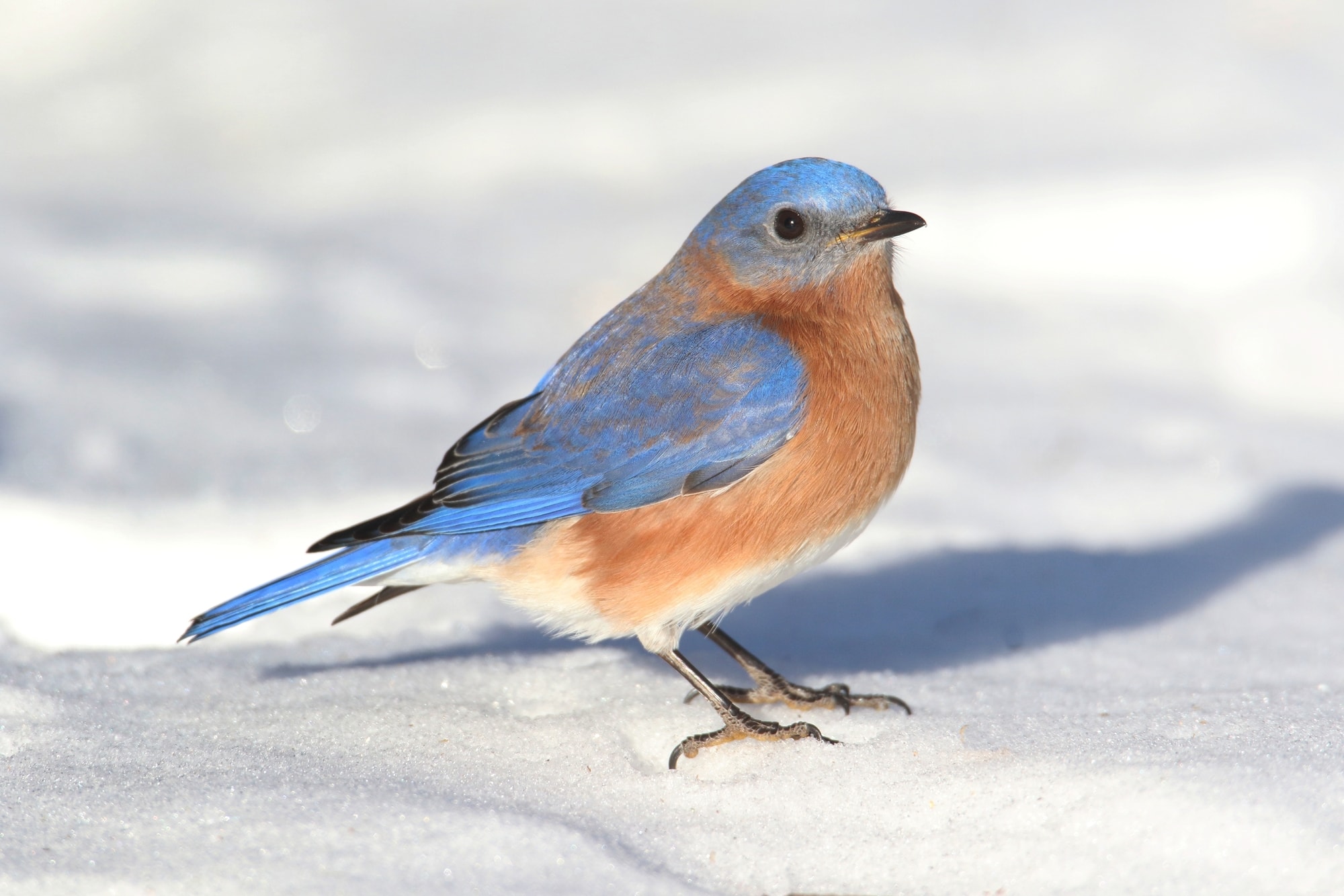
- Scientific Name: Sialia sialis
- Length: 6.3 to 8.3 In
- Weight: 0.9 to 1.2 oz
- Wingspan: 9.8 to 12.6 In
The Eastern Bluebird is a pretty common bird in Indiana. They are blue all over! From their blue head and blue wings to their blue back and tails. The rest of their body has brown and white plumage, especially their bellies.
The bird is pretty easy to spot and identify due to their abundance around the state, and you can easily observe them perched on a wire.
Blue Jay
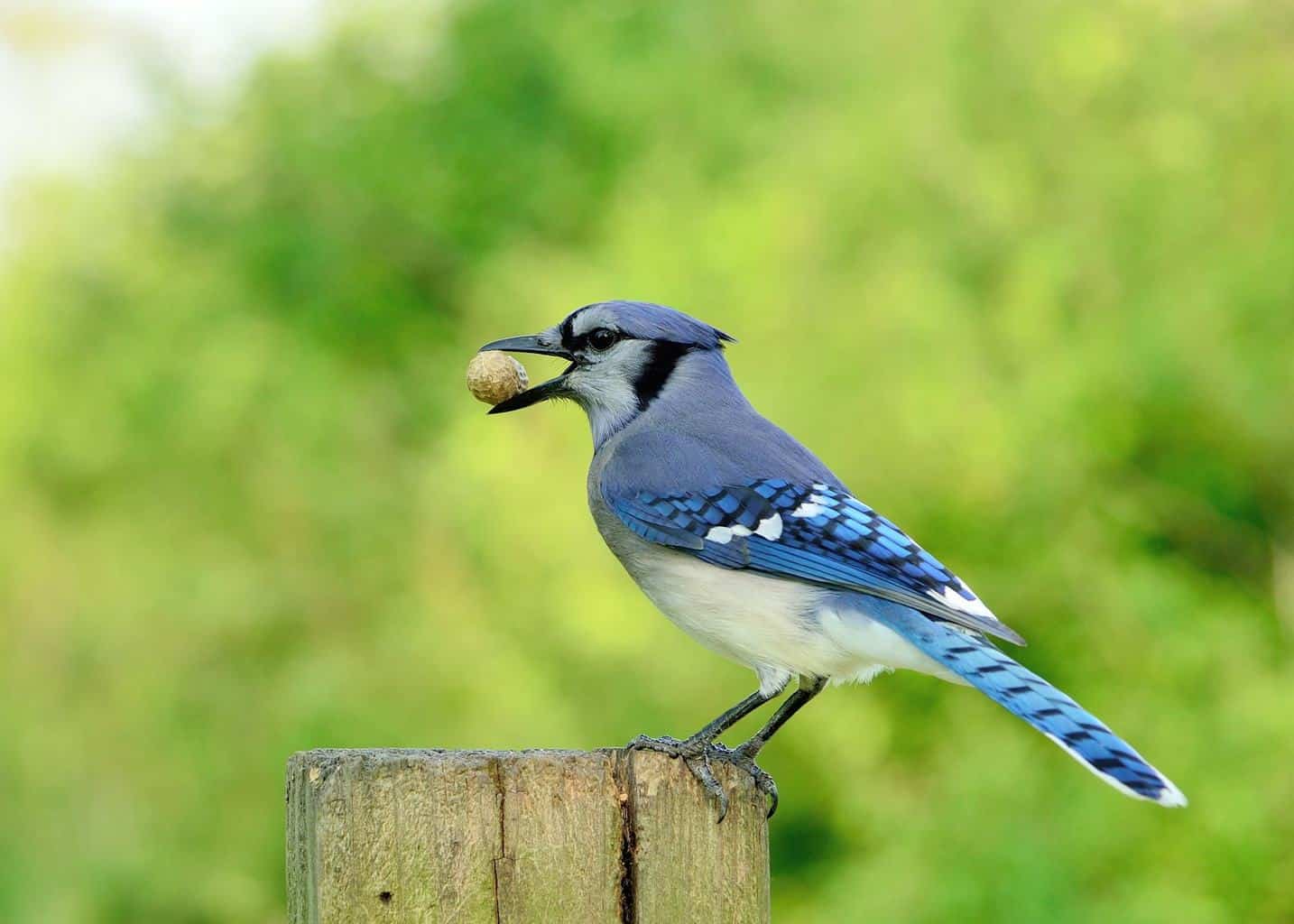
- Scientific Name: Cyanocitta cristata
- Length: 8.6 to 11.8 In
- Weight: 2.5 to 3.5 oz
- Wingspan: 13.3 to 16.9 In
Blue Jays are pretty common birds in Indiana. However, that doesn’t make them any less beautiful. They have a vibrant blue color that covers almost all their body. Since they have a knack for acorns and seeds, you can easily attract them to your bird feeders.
Common Grackle
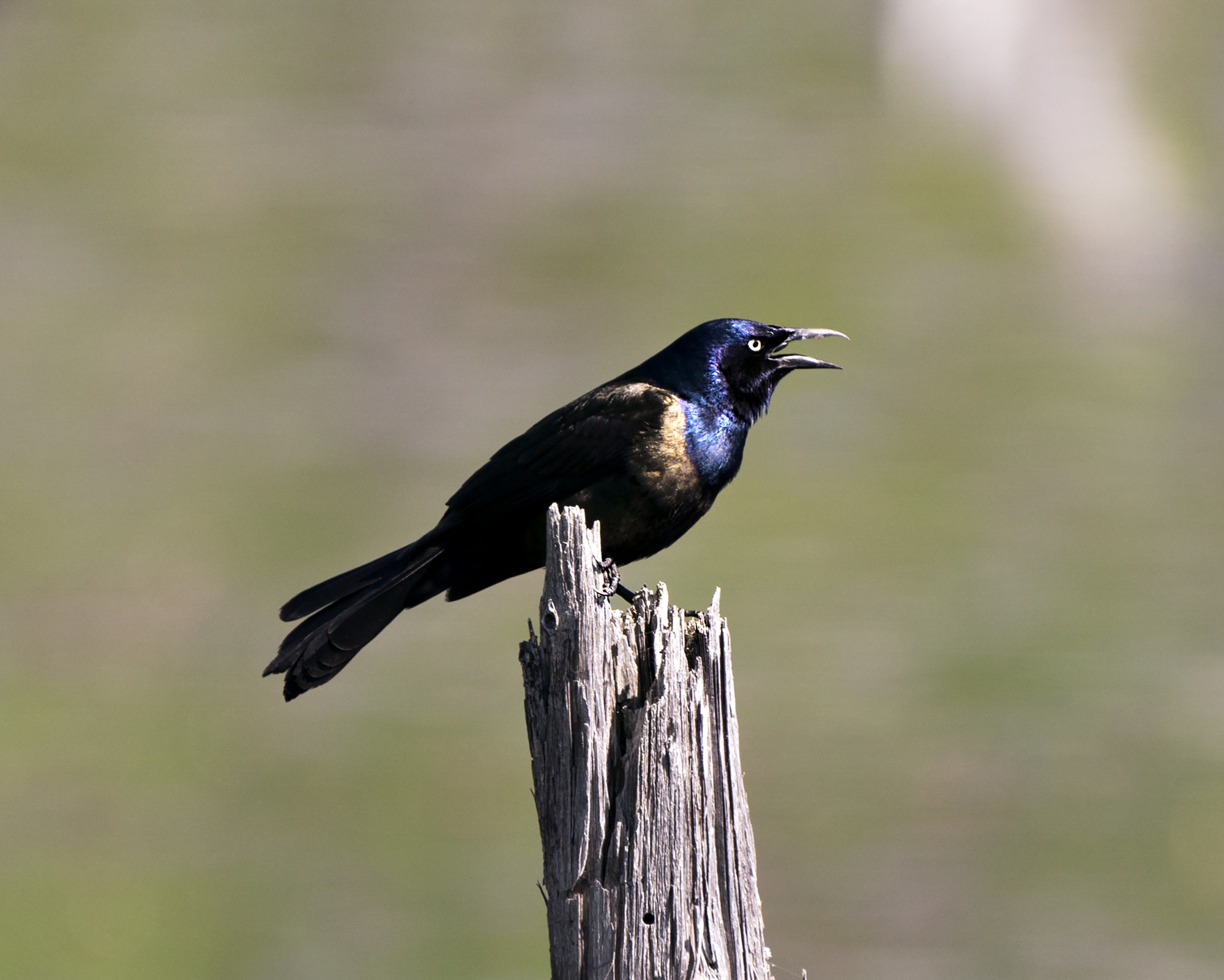
- Scientific name: Quiscalus quiscula
- Length: 11.0 to 13.4 in
- Weight: 2.6 to 5.0 oz
- Wingspan: 14.2 to 18.1 in
The Common Grackle is a relatively slim bird with a long black tail and a long bill that gently curves downward like blackbirds. As their name suggests, they’re quite common in North America and Indiana.
One of the most characteristic aspects of the bird is their color pattern, especially the males. They have a beautiful iridescent blue head and brown and purplish feathers that shine brightly from certain angles.
In addition to their color, it’s pretty easy to spot the uniquely colored birds because they live in flocks and produce noticeable calls when they’re gathered. This bird also nests just about anywhere, including other birds’ nests.
Cerulean Warbler
- Scientific Name: Setophaga cerulea
- Length: 4.2 to 4.5 in
- Weight: 0.2 to 0.4 oz
- Wingspan: 7.5 to 8.1 in
The Cerulean Warbler is one of the most noticeable birds of Indiana, despite experiencing a rapid decline in numbers among all warblers.
In addition to their sky blue plumage, they have an ascending and buzzy song that makes them unique. The bird is tricky to find, but it’s gratifying when you finally spot one. You’ll have the best luck finding them deep in uneven forest canopies.
Barn Swallow
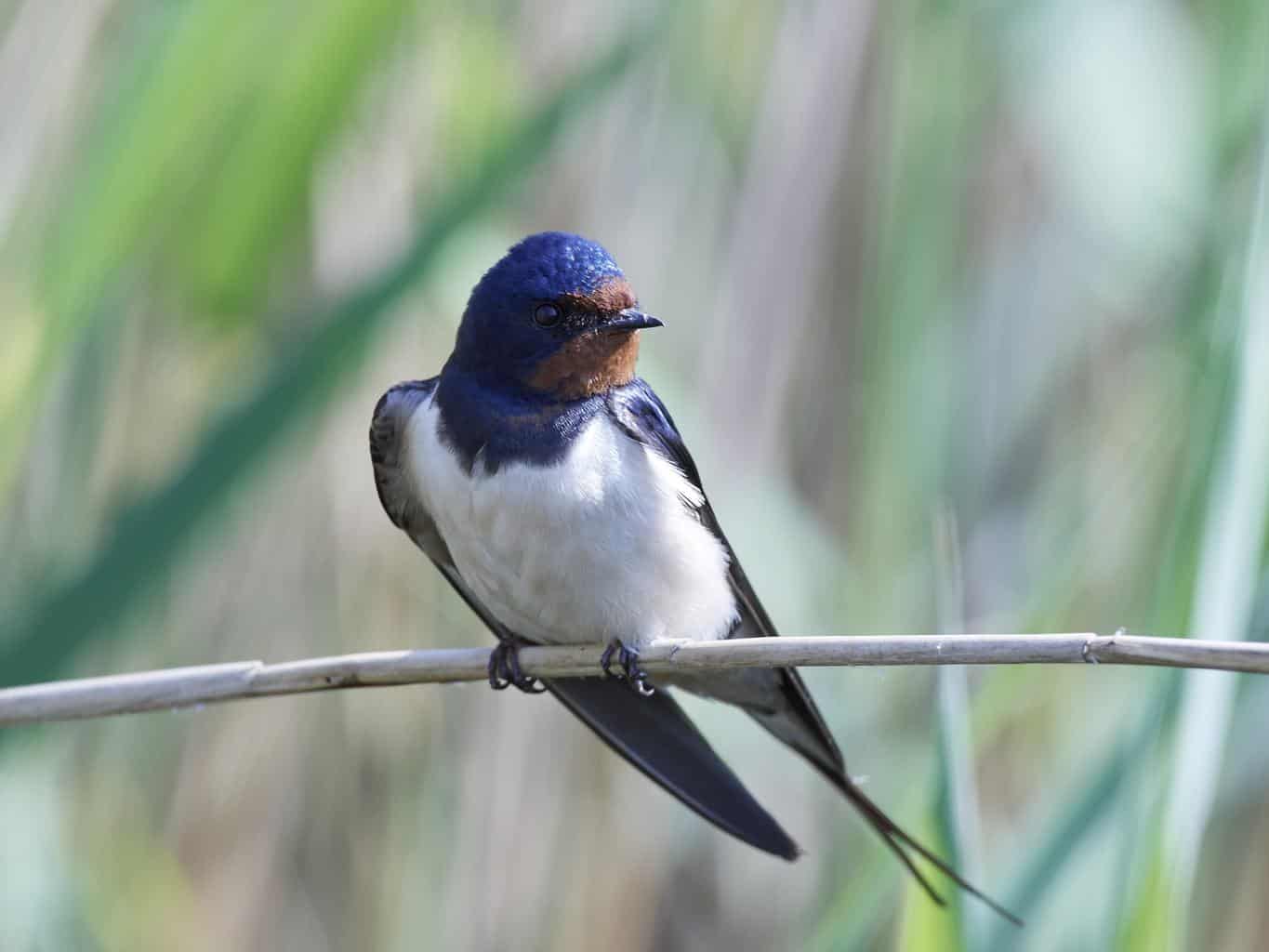
- Scientific Name: Hirundo rustica
- Length: 6.7 to 7.5 inches
- Weight: 0.56 to 0.78 ounces
- Wingspan: 12.6 to 13.6 inches
Among all the blue-colored birds you may find in North America, Barn Swallows are among the most common.
Ideally, they like to perch on communication poles and can be regularly spotted in open fields and meadows. They mainly feed on many kinds of insects but are easily drawn to cracked eggshells.
The most characteristic feature of the bird is that they have a steely blue plumage over their back, tails, and wings.
Green Birds in Indiana
Ruby-Throated Hummingbird
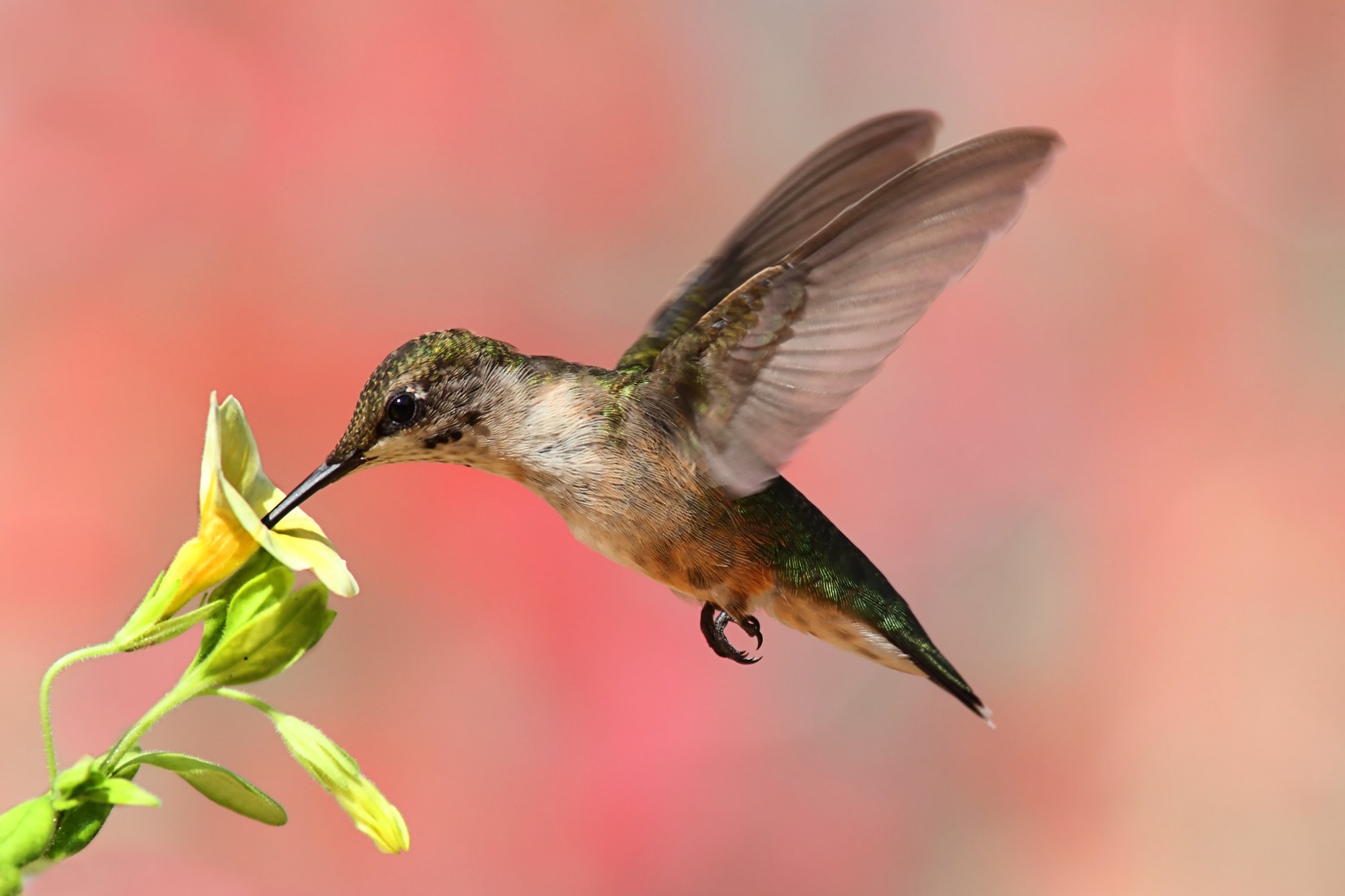
- Scientific Name: Archilochus colubris
- Length: 2.8 to 3.5 in
- Weight: 0.1 to 0.2 oz
- Wingspan: 3.1 to 4.3 in
Despite the variety of birds in Indiana, it has a relatively limited collection of hummingbirds. The only common ones around the state are the Ruby-throated Hummingbird, while most of the other species are rarely spotted in the region.
The male adult Ruby-throated Hummingbird has a ruby-red throat and black mask that extends behind its eyes. Like most other North American hummingbirds, this small-sized bird has an iridescent green back with a pale greenish-grey belly and sides.
Hummingbirds are known for their ability to hover in place because of their rapid wing beats. They can even move backward at need.
Green Heron

- Scientific Name: Butorides virescens
- Length: 16.0 to 18.0 in
- Weight: 8.3 to 8.7 oz
- Wingspan: 25.2 to 26.8 in
The Green Heron is a medium to large wading bird characterized by its greenish wash all over its body, hence the name. The birds are quite common in Indiana as well as the neighboring states of New England.
The bird is usually spotted around shallow water bodies looking for aquatic insects and other creatures, so you’ll mostly find them in marshes and swamps, especially if you go there from spring to fall. Since their life depends on those marshes, the loss of natural habitat has led to a significant decrease in their numbers, especially in the late 1900s.
Orange Birds in Indiana
American Robin
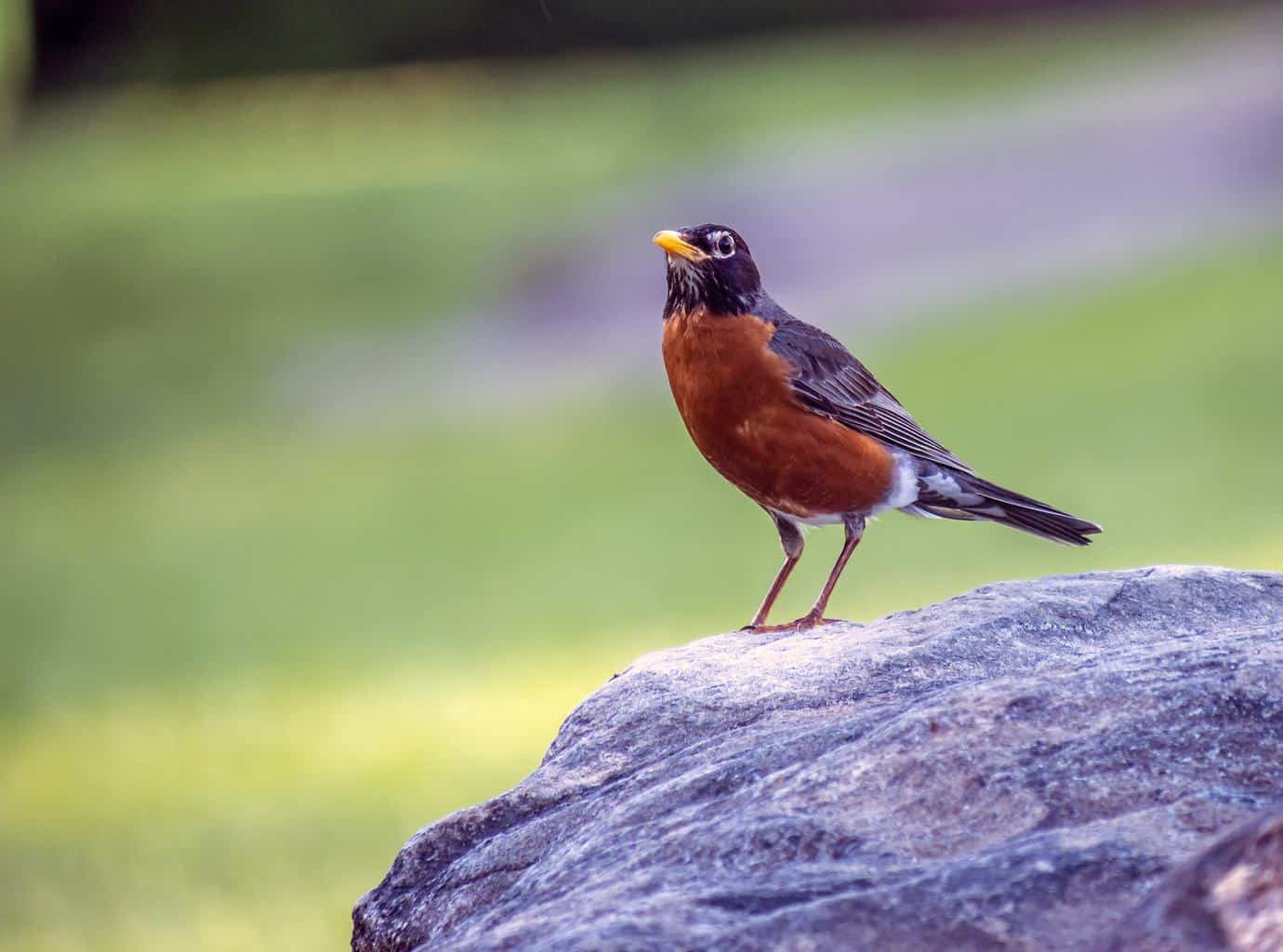
- Scientific Name: Turdus migratorius
- Length: 9.0 to 11.0 In
- Weight: 2.3 to 2.8 oz
- Wingspan: 14.7 to 16.5 In
The American Robin inhabits a huge chunk of the United States, and you can easily find it everywhere, from dense forests to bird feeders in backyards. They’re characterized by their reddish-orange plumage all over their breasts, along with the black-colored feathers covering their wings and backs and a white patch under the tail.
This abundant songbird is pretty friendly around humans and will lay its characteristic sky blue eggs in nearby nests.
Baltimore Oriole
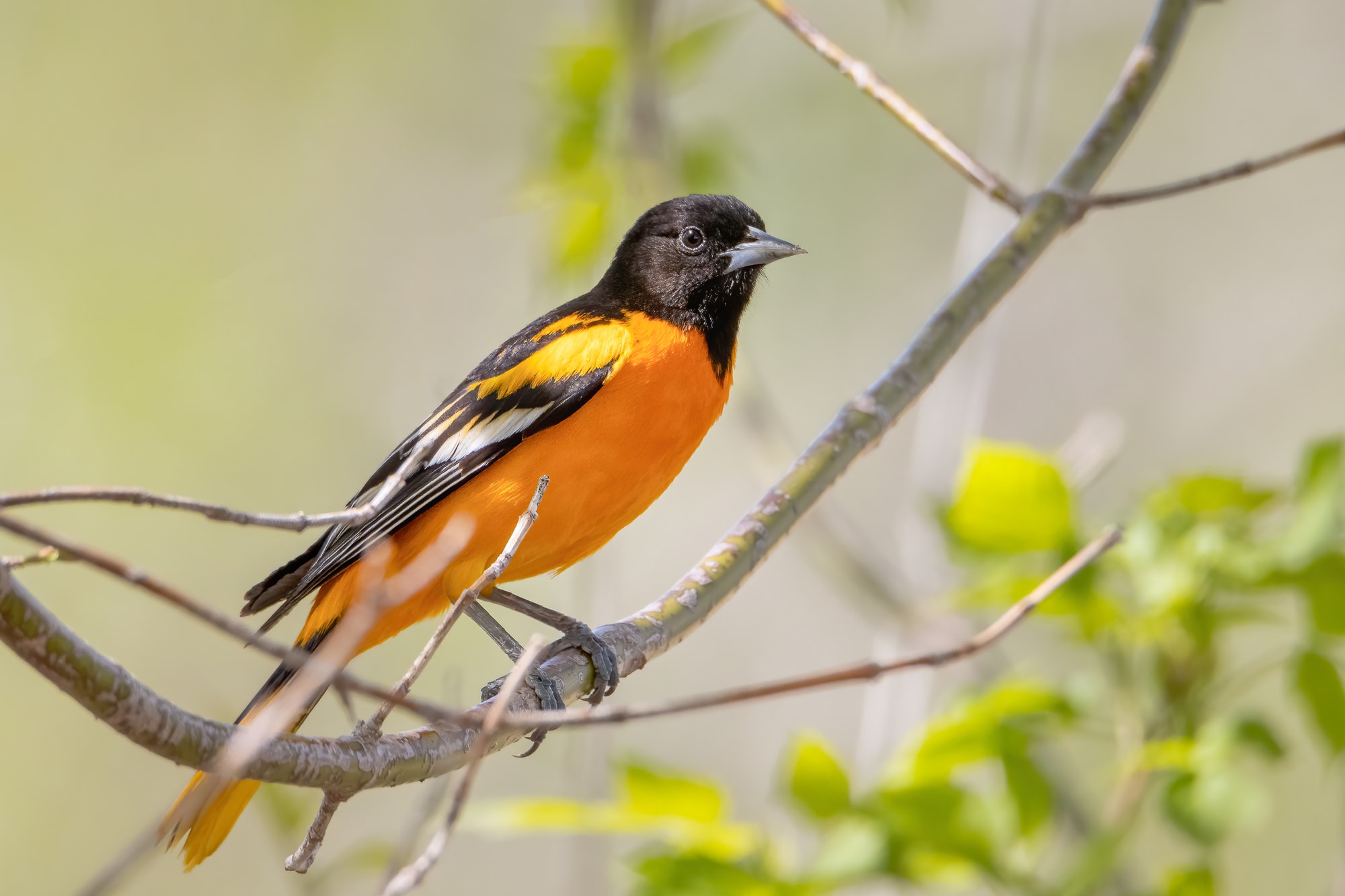
- Scientific Name: Icterus galbula
- Length: 5.8 to 7.8 in
- Weight: 2.3 to 3.5 oz
- Wingspan: 3.5 to 4.7 in
These orange-colored passerines are migratory birds named after the coat of arms of Lord Baltimore, the founder of the Maryland Colony, which had the same shade of orange in it. The orange plumage covers most of the rump, underparts, and shoulder patches in males. The rest of the body is mostly dark with white markings.
The females have a wider array of orange that ranges from yellowish-orange all the way to the deep flaming orange of male Orioles.
Summer Tanager
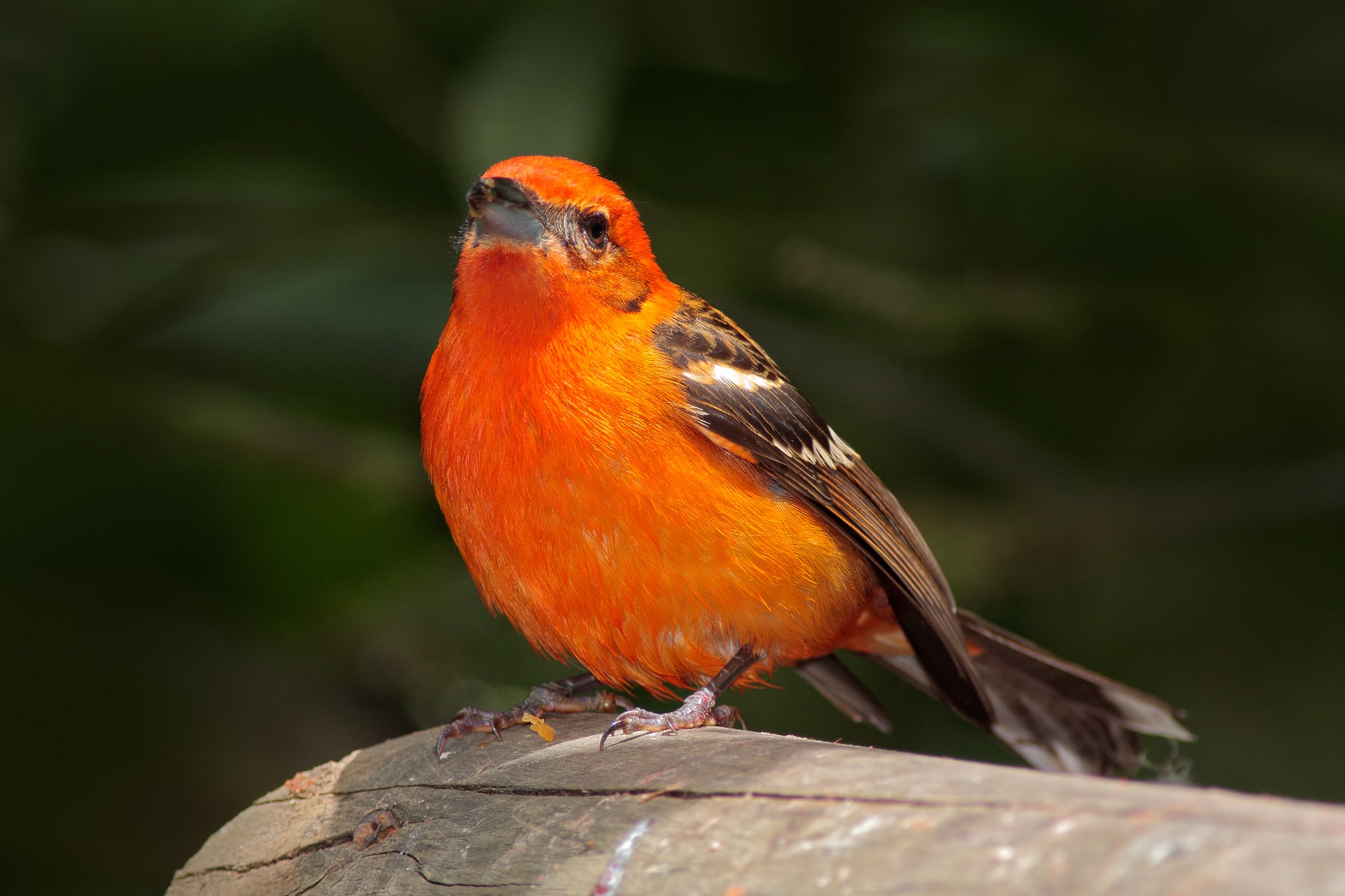
- Scientific Name: Piranga rubra
- Length: 6.1 to 6.9 inches
- Weight: 0.8 to 1.1 ounce
- Wingspan: 11.1 to 11.9 inches
The Summer Tanager is a small-sized songbird that you may come across in Indiana. They’re characterized by having a reddish-orange color that shifts to full-blown orange as you go towards their underbellies.
They’ll often visit your backyard and lurk around your birdfeeder, especially if you offer them their favorite meals, such as suet, mealworms, and even pieces of fruits.
Yellow Birds in Indiana
American Goldfinch

- Scientific Name: Spinus tristis
- Length: 4.3 to 5.5 In
- Weight: 0.39 to 0.71 oz
- Wingspan: 7.5 to 8.7 In
Another ubiquitous bird that also happens to be brightly colored is the American Goldfinch. These birds will have a mostly golden-yellow, beautiful plumage all over their body with black parts around their foreheads and wings.
They’re extremely tame around humans and will land in your backyard while foraging.
Yellow-Rumped Warbler
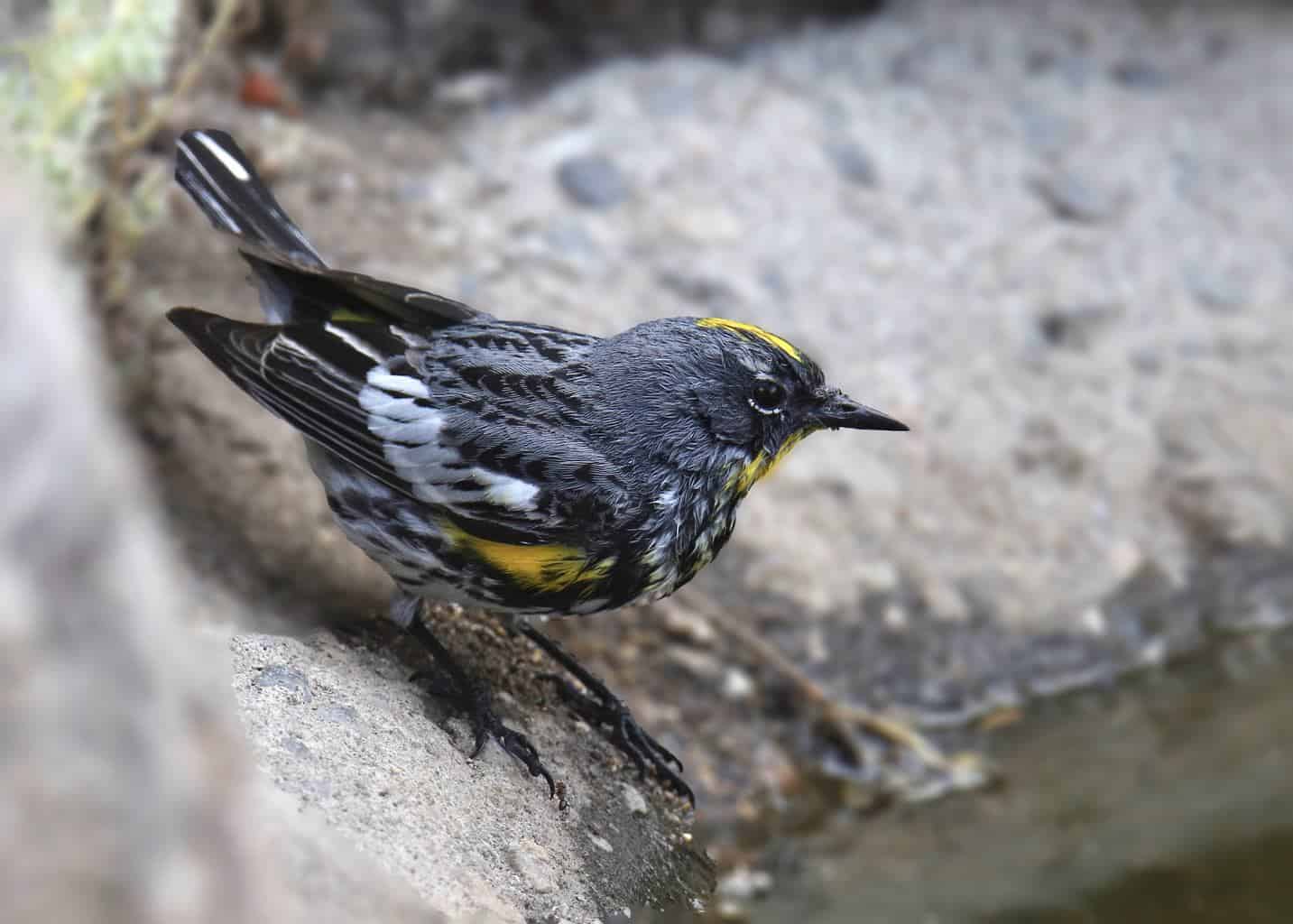
- Scientific Name: Setophaga coronata
- Length: 4.7 to 5.5 inches
- Weight: 0.4 to 0.5 ounces
- Wingspan: 7.5 to 9.1 inches
The Yellow-rumped Warblers are small and stocky. However, what makes them unique among other birds is that they will change their coat of plumage depending on the season.
Although they’ll land in your backyard while foraging in winter, they’ll have a pale brownish color that makes them quite tricky to identify. Their favorite feeder food is black oil sunflower seeds.
However, when the summer comes, they’ll exchange this dull coat for a black one with a yellow plumage covering their rumps, faces, and wings, which is where they’ve earned their names!
They spend most of the summer perching on trees, so you’ll have to go out and look for them in nearby forests.
American Yellow Warbler
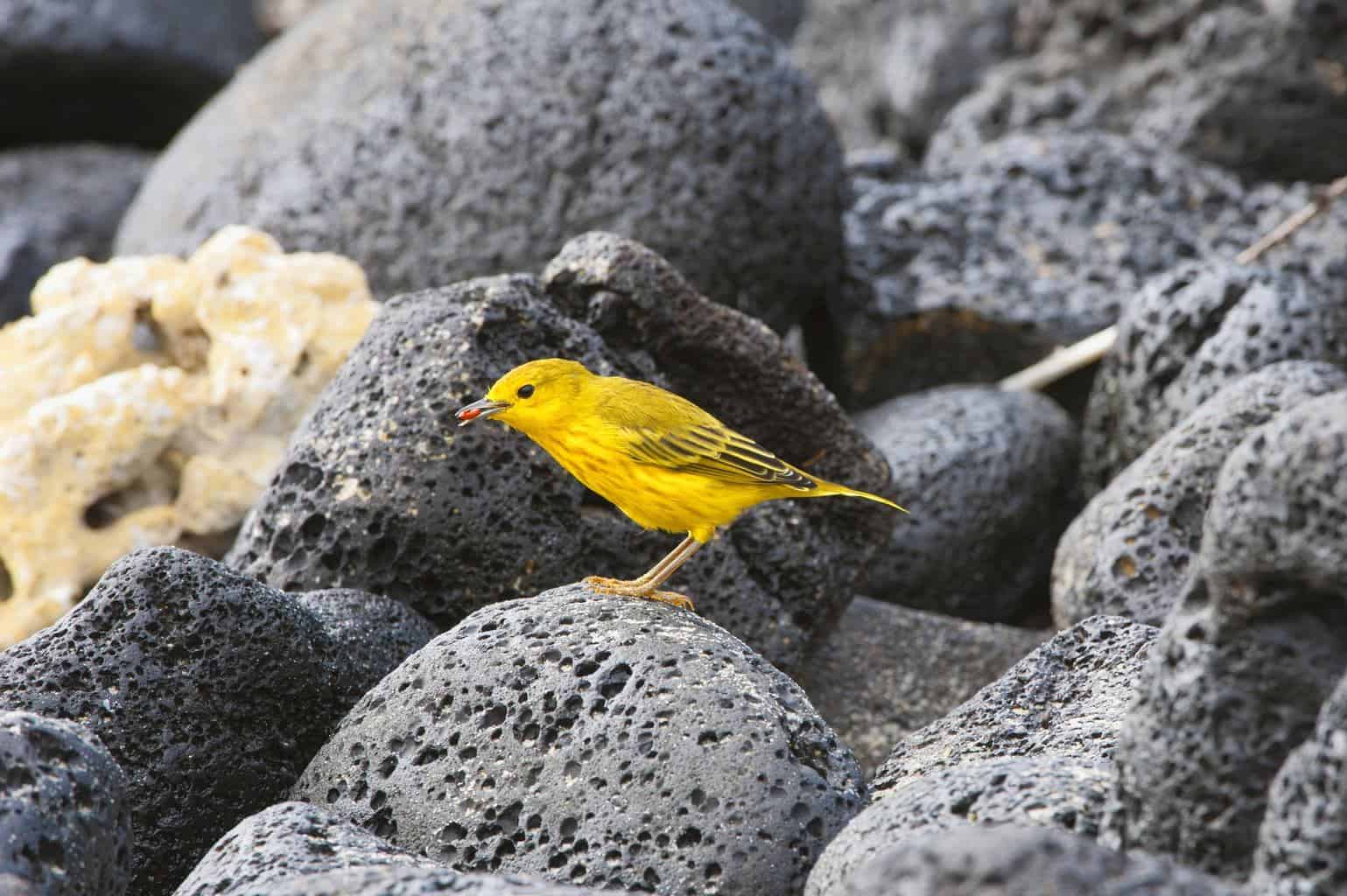
- Scientific Name: Setophaga petechia
- Length: 4.7 to 5.1 in
- Weight: 0.3 to 0.4 oz
- Wingspan: 6.3 to 7.9 in
The American Yellow Warbler also rocks an astonishing yellow plumage covering their belly and hood along with olive green parts on their back.
Despite their similarities with the Yellow Warbler, they’re quite elusive and more difficult to spot in general.
If you want to find them, you’ll have to search around spruce trees and poplar forests in the area. They prefer trees that are close to lakes to perch, so make sure that you search there.
Other Birds in Indiana
Brown-Headed Cowbirds

- Scientific Name: Molothrus ater
- Length: 7.5 to 8.7 in (males) – 6.3 to 7.9 in (females)
- Weight: 1.5 to 1.8 oz (males) – 1.3 to 1.6 oz (female)
- Wingspan: 14.0 to 14.4 in (males) – 15.0 to 12.6 in (females)
Although Brown-headed Cowbirds are North American native birds, a lot of people consider them a nuisance. The not-so-good reputation of the bird arose due to their parasitic nature.
The male Cowbird has a high-pitched tune that it uses to attract the females for breeding. A Brown-headed Cowbird will land on other birds’ nests, puncture one of their eggs, and lay their eggs to be raised by other birds instead.
They’ve been associated with the decline of many bird species, but they’re pretty common in Indiana.
Mourning Dove
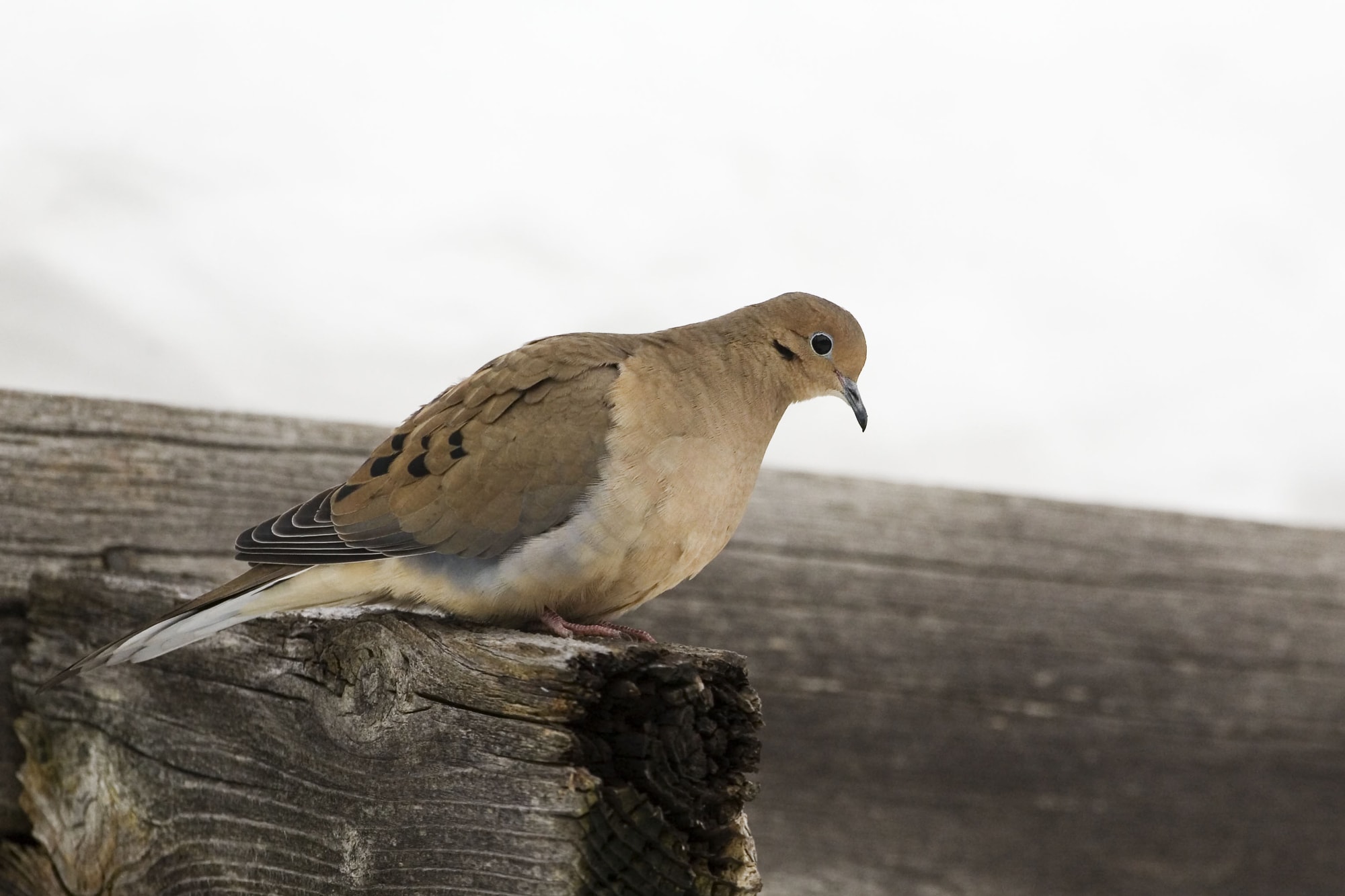
- Scientific Name: Zenaida macroura
- Length: 11.8 to 12.2 In
- Weight: 4.3 to 6.4 oz
- Wingspan: 17.3 to 18.2 In
There aren’t many more common bird species than the Mourning Doves in the state of Indiana. This medium-sized bird is characterized by its buff to pale brown plumage covering its entire body, except for a few black spots for extra cover from potential predators.
This impressive camouflage also fools our eyes, so unless you’re an expert birder, it might be quite tricky to spot them without equipment.
Lucky for you, they’re well adapted to urban life and will visit a nearby bird feeder if they’re filled with their favorite food, such as seed and millet.
Purple Finch
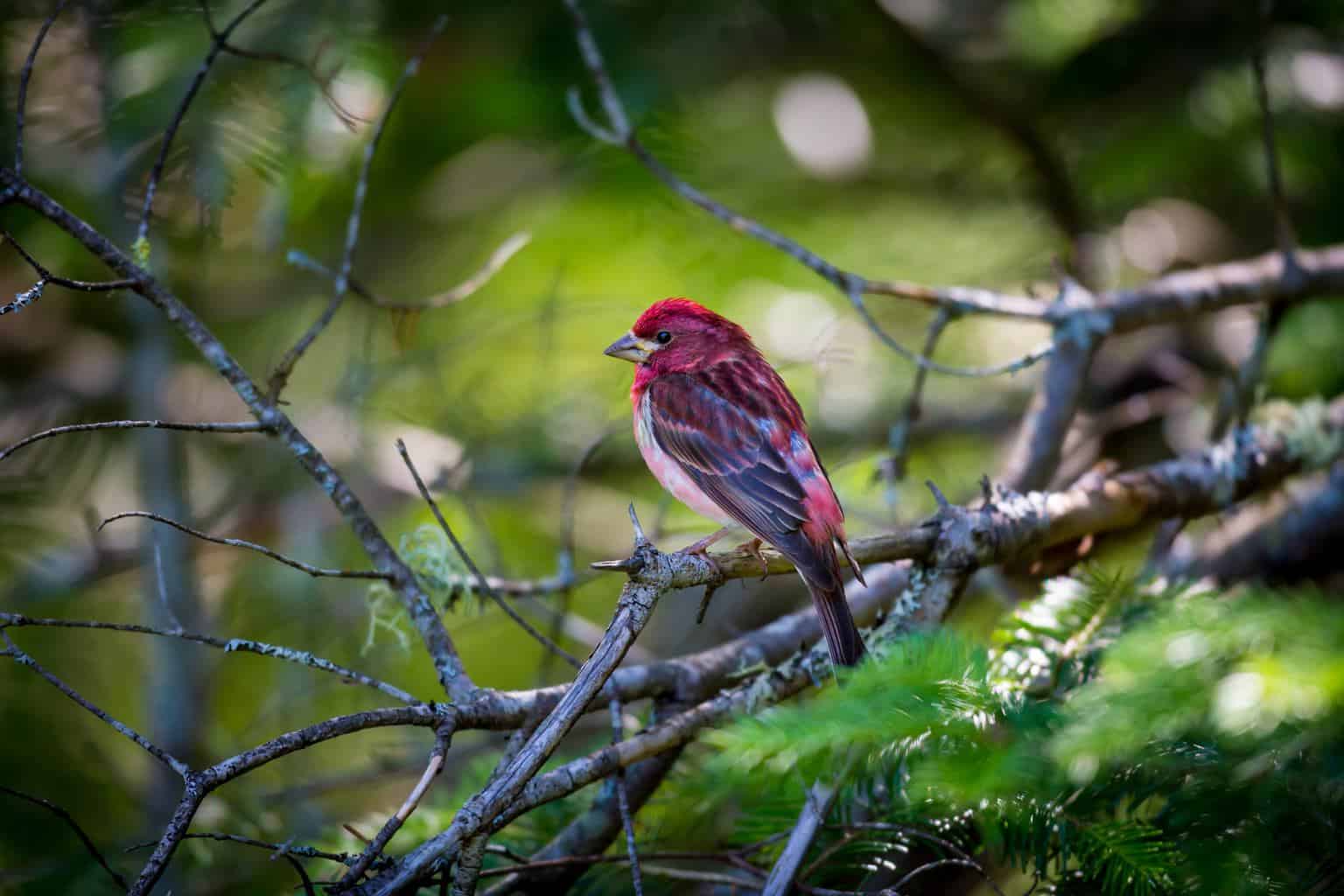
- Scientific Name: Haemorhous purpureus
- Length: 4.7 to 6.3 In
- Weight: 0.6 to 1.1 oz
- Wingspan: 8.7 to 10.2 In
Don’t let the bird’s name trick you, as the Purple Finch is mostly raspberry-colored with a faint purple wash covering its body, especially when seen against a white background.
They breed in coniferous forests and like open wooded areas where they can forage for insects on the ground and perch on nearby trees.
American Crow

- Scientific Name: Corvus brachyrhynchos
- Length: 15.8 to 20.9 in
- Weight: 11.2 to 21.9 oz
- Wingspan: 33.5 to 39.4 in
The American Crow is one of the most popular birds in the U.S., whether in pop culture or abundance. They rock an all-black style from bill to tail and have a remarkable level of intelligence that sets them apart from most birds.
American Crows are quite social, and you can find them in open areas, such as grasslands, farms, and nearby trees.
White-Breasted Nuthatch
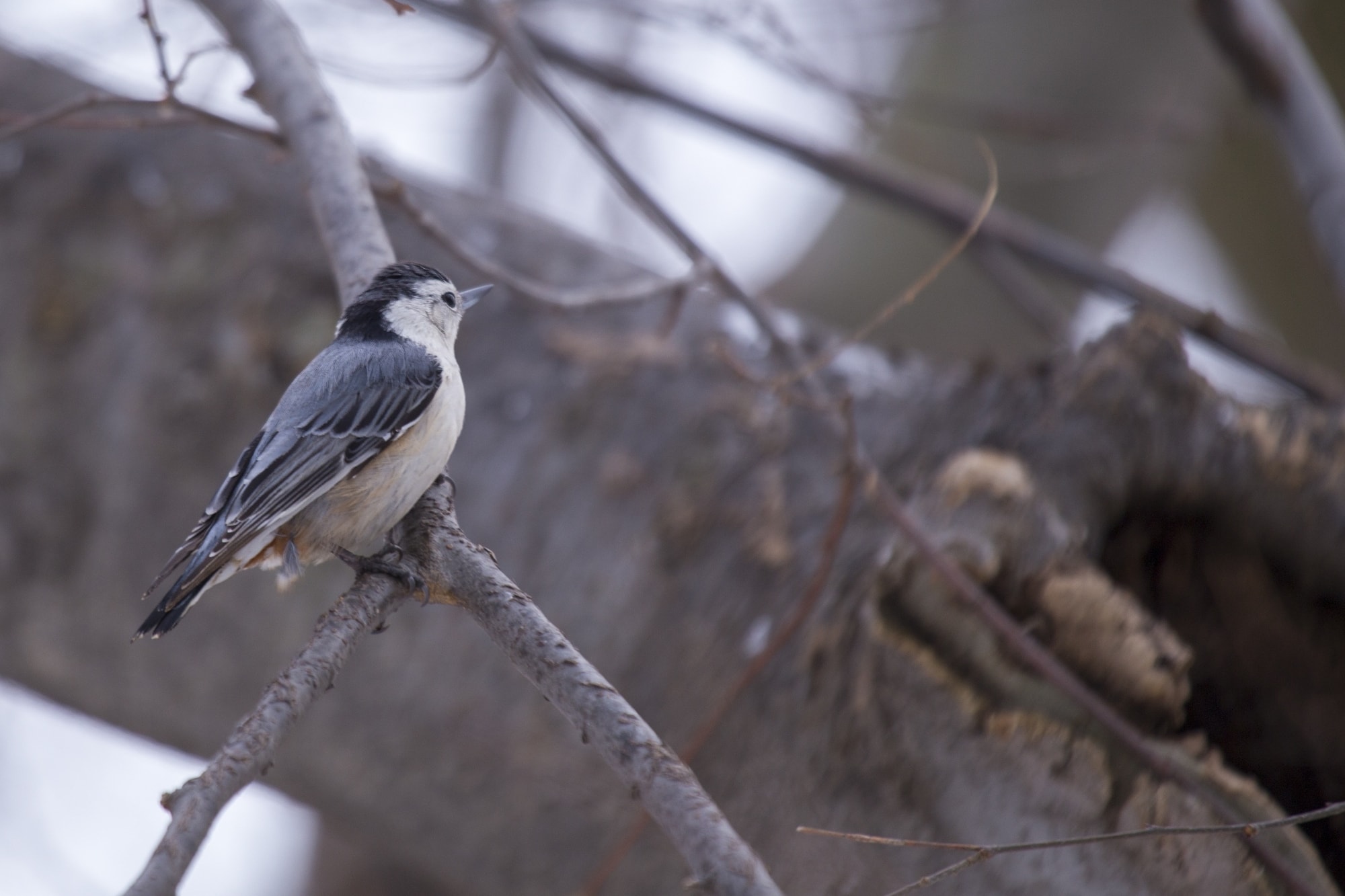
- Scientific name: Sitta carolinensis
- Length: 5.1 to 5.5 in
- Weight: 0.6 to 1.1 oz
- Wingspan: 7.9 to 10.6 in
The White-breasted Nuthatch is a unique bird that is very common in the Mideast and Midwest of the United States. They’re compact birds with short tails, long point bills, and no necks.
They have a characteristic white breast and a blue-gray back, one of their most characteristic features.
You can find them mostly in deciduous trees in the forests of Indiana, but they can be around human-populated areas as well.
Short-Eared Owl

- Scientific Name: Asio flammeus
- Length: 13.4 to 16.9 in
- Weight: 7.3 to 16.8 oz
- Wingspan: 33.5 to 40.5 in
The Short-eared Owl is one of the most charismatic owls of Indiana. They have a rounded head and a yellowish facial disk with bright markings on the edge. Despite their name, it isn’t easy to spot their ear tufts from a distance.
European Starling
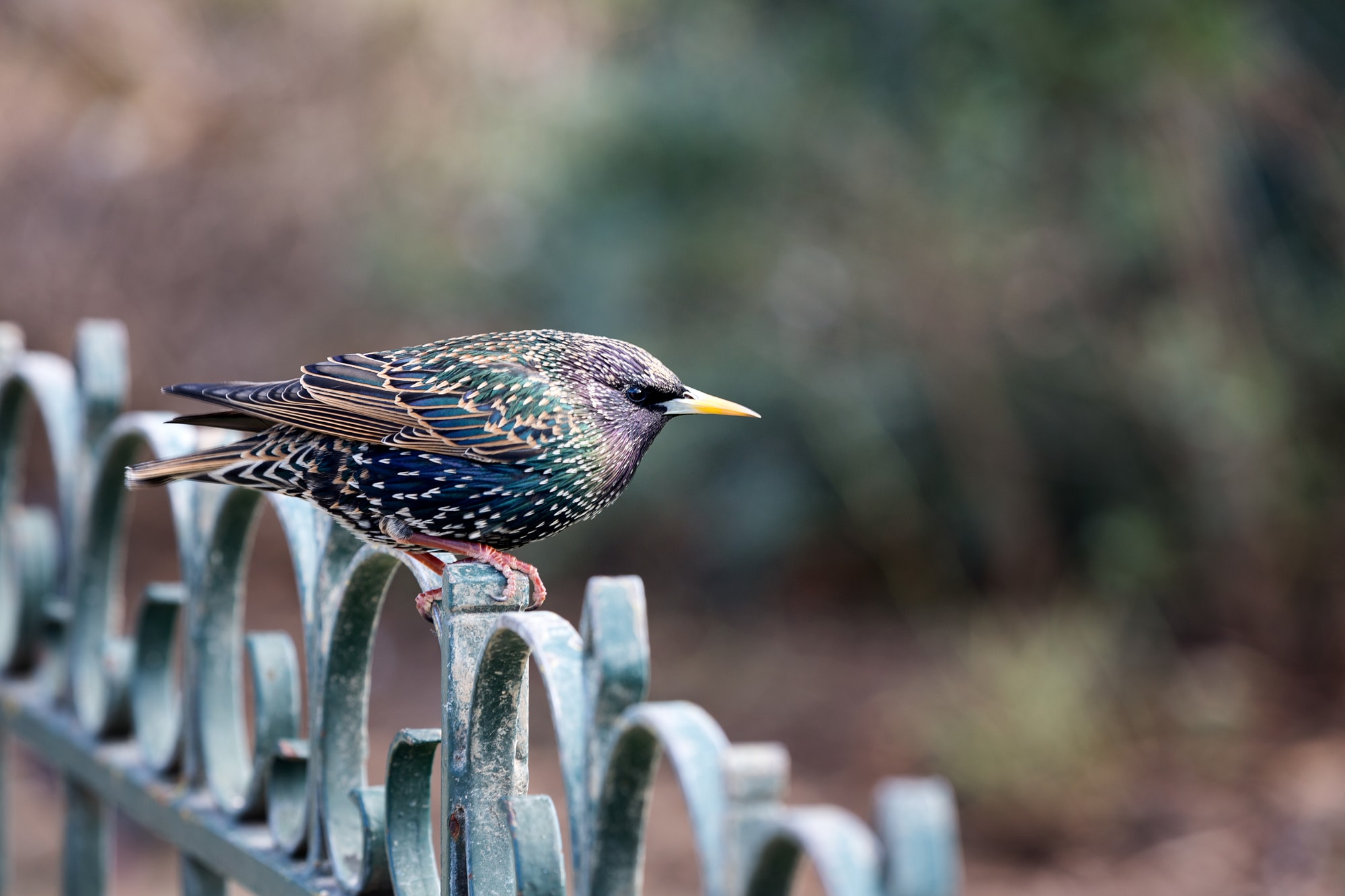
- Scientific name: Sturnus vulgaris
- Length: 7.9 to 9.1 in
- Weight: 2.1 to 3.4 oz
- Wingspan: 12.2 to 15.8 in
The European starling is a resilient bird that is found all across the United States, including Indiana. Thanks to their beautiful iridescent plumage with tints of purple and green, they’re a joy to watch.
To enjoy this beautiful bird, make sure that you observe them from the right angle during the summer to observe this beautiful coat!
Purple Martin
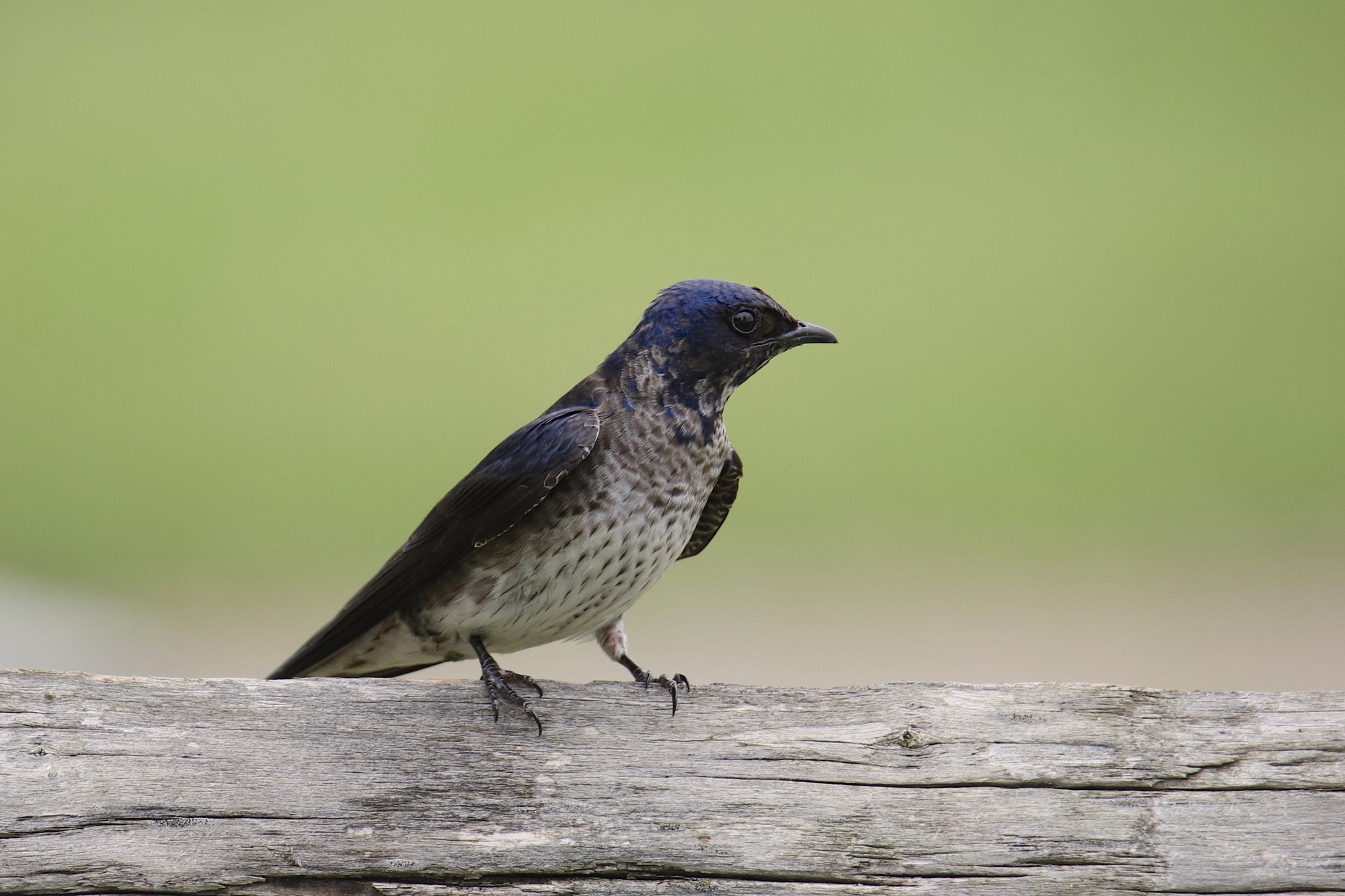
- Scientific Name: Progne subis
- Length: 7.5 to 7.9 in
- Weight: 1.6 to 2.1 oz
- Wingspan: 15.3 to 16.1 In
The color purple is one of the most unique and impressive colors out there. However, it’s rare to spot a bird with purple plumage in nature. A good example of this purple rarity is the purple martin, which has blue feathers on its back that barely has a purple tinge.
Purple martins are hard to spot for entry-level birders because they have a minimal range and aren’t easily adapted to new areas.
Final Thoughts
This wraps it up for today’s guide about the most impressive and colorful birds in Indiana! As you can see, the State of Indiana is a rich state regarding bird variety. The variety of bird calls on a summer night is a real treat for bird watchers.
Some of these are common feeder birds that will visit with the right motivation. So grab your printable checklist and be on the lookout for all of the birds native to Indiana.
However, you should keep in mind that this article only has some carefully selected specimens of the most impressive birds in the state, but there are hundreds of bird species out there that await you!

